Estimated reading time 14 minutes, 43 seconds.
When Lynn Hamilton was growing up in Edmonton, Alta., talk around the family dinner table was always about airplanes and pilots and contracts.
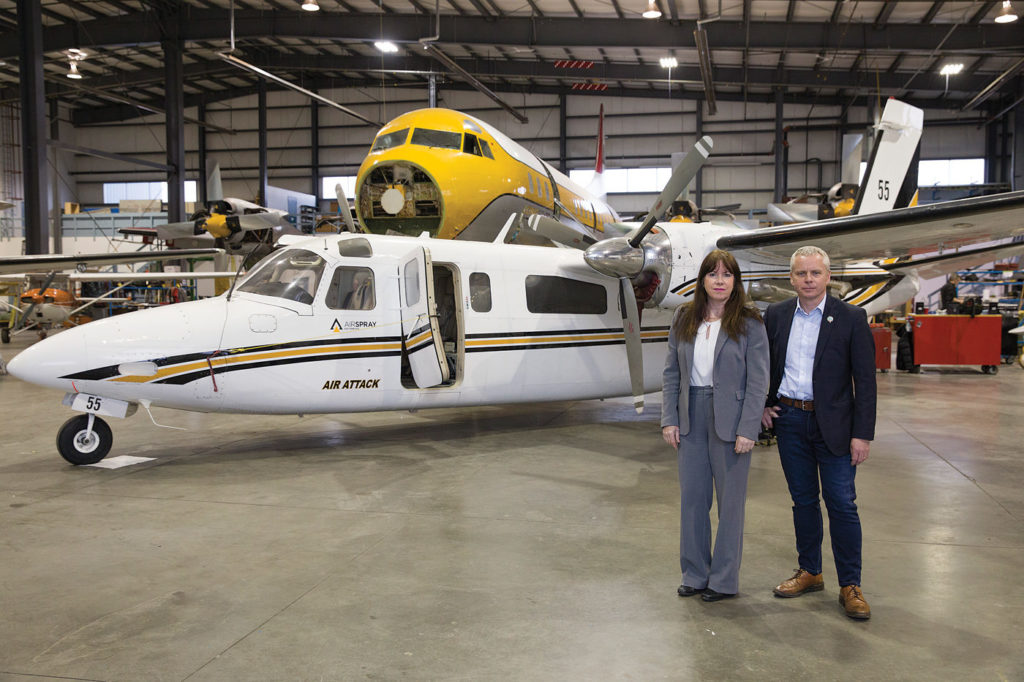
Dwight Arthur – Photek Photo
“My dad really loved to talk about the business and the people who flew. He was proud of his business and his success,” recalled Hamilton, who is the owner, president and CEO of Air Spray.
Her dad was Canada’s Aviation Hall of Famer the late Don Hamilton, co-founder and long-time owner of Air Spray. Since it was founded in 1967, the company has provided air tanker and air attack aircraft to fight wildfires that threaten communities and forests. For Don, involving his family in the business went far beyond just mealtime conversation.
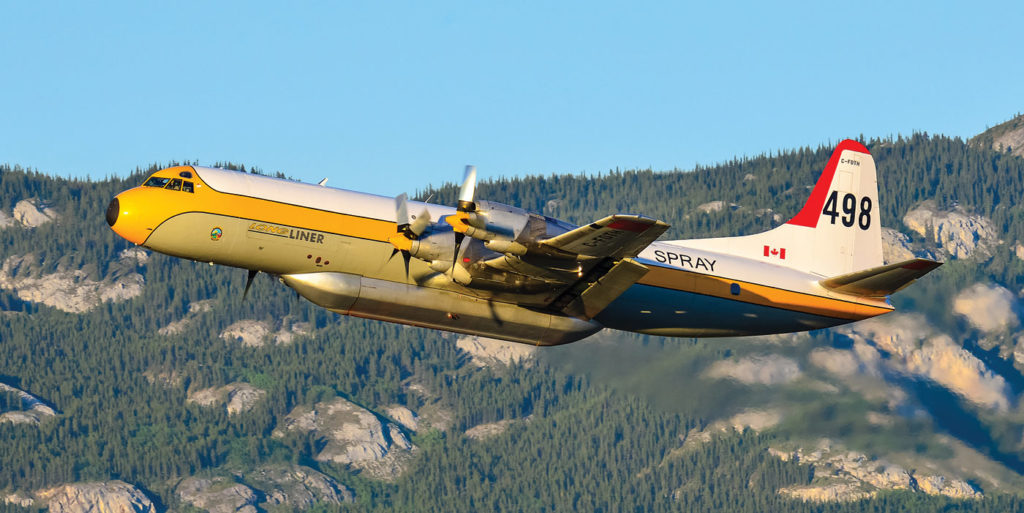
“Dad was so passionate about flying. Any chance he could get, he took us to fly-in breakfasts all across Alberta and B.C., and aircraft and parts buying trips all over the U.S.,” said Hamilton. “Even as little kids he would let us take the controls.”
Little did she know at the time that “taking the controls” would eventually mean assuming the helm of Air Spray.
Early roots
The original Air Spray Ltd. [the current company is officially named Air Spray (1967) Ltd.] started crop dusting around Wetaskiwin, Alta., in 1954, later expanding into mosquito control. New opportunities soon came along with a blooming aerial wildfire suppression industry in the mid-1950s, so the company ceased crop dusting and converted its two Stearman biplanes to fight wildfires under government contract.

In 1958, Air Spray Ltd. was awarded the first Alberta government contract for aerial wildfire suppression. Operations expanded in 1961 with the adoption of larger and faster TBM Avengers.
Formed in 1967, the present company saw a big step forward in speed and load-carrying capabilities with acquisition of the twin-engine Douglas B-26 Invader, a highly effective Second World War attack airplane that also served in Korea and Vietnam. It came with a bonus: a bomb bay ideal for retardant tank installations.
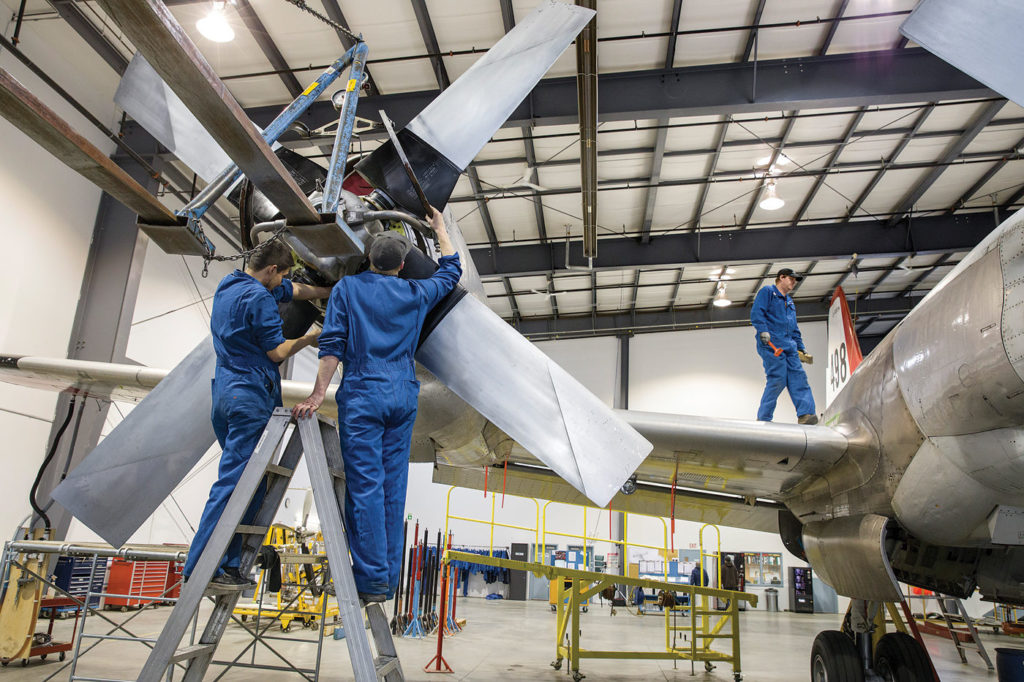
Air Spray’s B-26 fleet would eventually peak at 22 aircraft, but conversions proved costly. That’s when Don Hamilton spotted the potential and stepped in to invest in Air Spray. The first B-26 conversion was completed in 1970, and by 1972 Hamilton was sole owner of the company.
Operations moved from the Edmonton City Centre Airport to Red Deer Regional Airport and grew quickly. By 1990, Air Spray was operating 15 B-26 air tankers; 10 Cessna 310 bird dog aircraft; seven Canadair CL-215s (three owned by Air Spray and four owned by the Government of Alberta); two Cessna 340s; three Aerostars; and a Cessna Citation executive jet used as a bird dog aircraft. Staff had grown to 60 pilots, support and maintenance personnel.
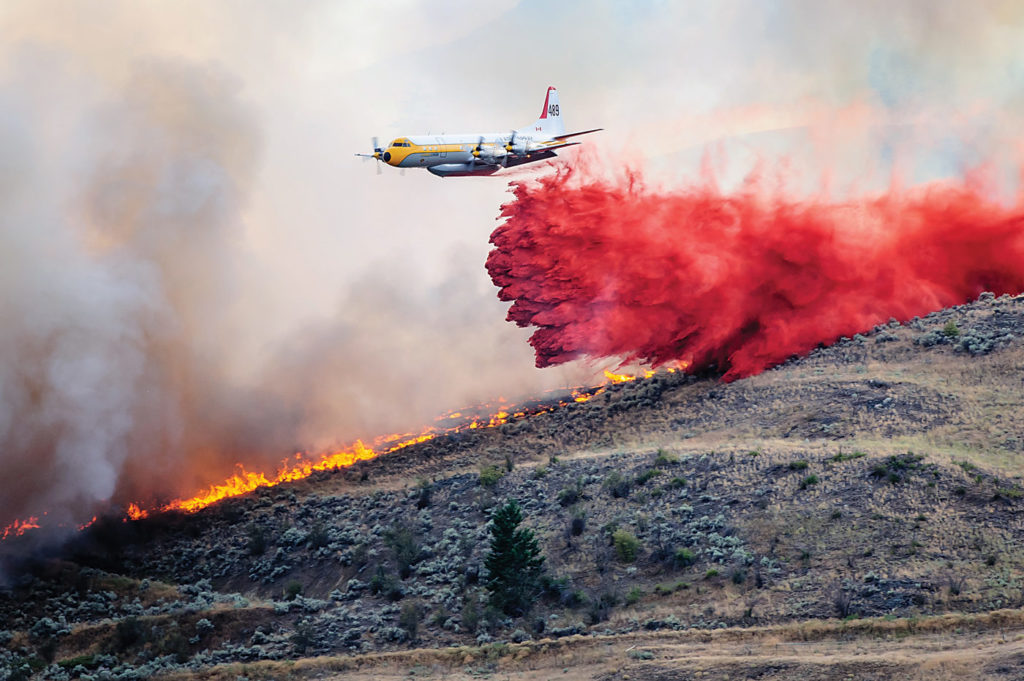
Soon, the company realized a need for newer, faster, longer-range aircraft with larger retardant load capacities. The B-26s were retired and replaced with four-engine turboprop Lockheed L-188 Electras, which are the backbone of Air Spray’s Canadian operations today.
Present day
“We have nine [Electras] operational,” explained Paul Lane, who is vice president and chief operating officer, as well as Hamilton’s spouse. “[They’re] divided as to contracts with Alberta, B.C., and the Yukon.”
He said two spare Electras are on hand to back up the main fleet as needed. Guiding the bomber drops in Canada is a fleet of 10 Twin Commander 690 bird dog aircraft which operate with a government air attack officer aboard.
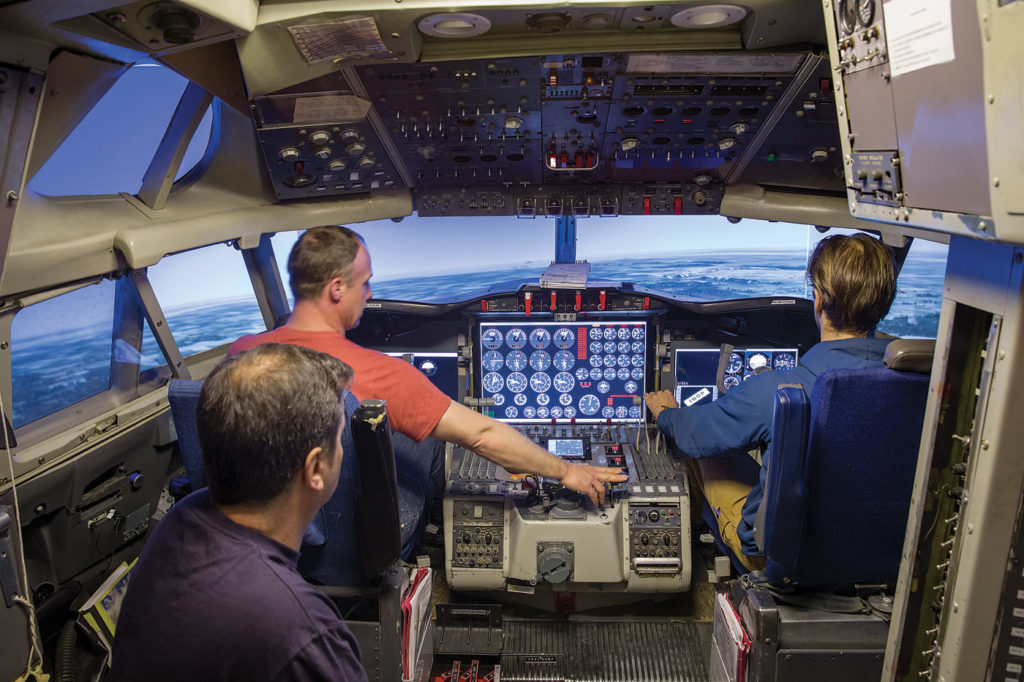
Added to that fleet is one Twin Commander 695, the conversion of which is now complete. “It’s the 690’s big brother that we are bringing into service this year,” said Lane. “It will go into service in a few weeks’ time in B.C.” He added that the long term objective with the Commanders is to increase the 695 fleet in Canada and transition the 690s into the company’s U.S. operation.
South of the border, Air Spray has a base in Chico, Calif., that fields three Air Tractor 802Fs and five Air Tractor Fire Boss aircraft, an 802 derivative with skimming capability.
“One of the 802s is under contract to the state of Oregon, and the other is the first 802 contracted by the federal U.S. Forest Service, also out of Oregon,” said Lane. Of the five Fire Bosses, two are on contract with Alaska and the Bureau of Land Management, and three are with the state of Washington.
Five British Aerospace BAe 146 aircraft will soon be joining the 802s in the U.S. fleet.

“We are just completing the phased build-out of our first one; the second is underway,” explained Lane. The build involves the installation of a brand new gravity-fed internal tank system, unlike existing models that rely on a pressurized tank.
“We will get final certification on it within weeks. It has been a long process; a major engineering project.”
Missions, mods and maintenance
The BAe 146 modifications are happening at Air Spray’s base in Chico, which also serves as a maintenance and training facility. During the fire season it is busy with long term build-out work or maintenance, and off-season it is the winter home for the aircraft.
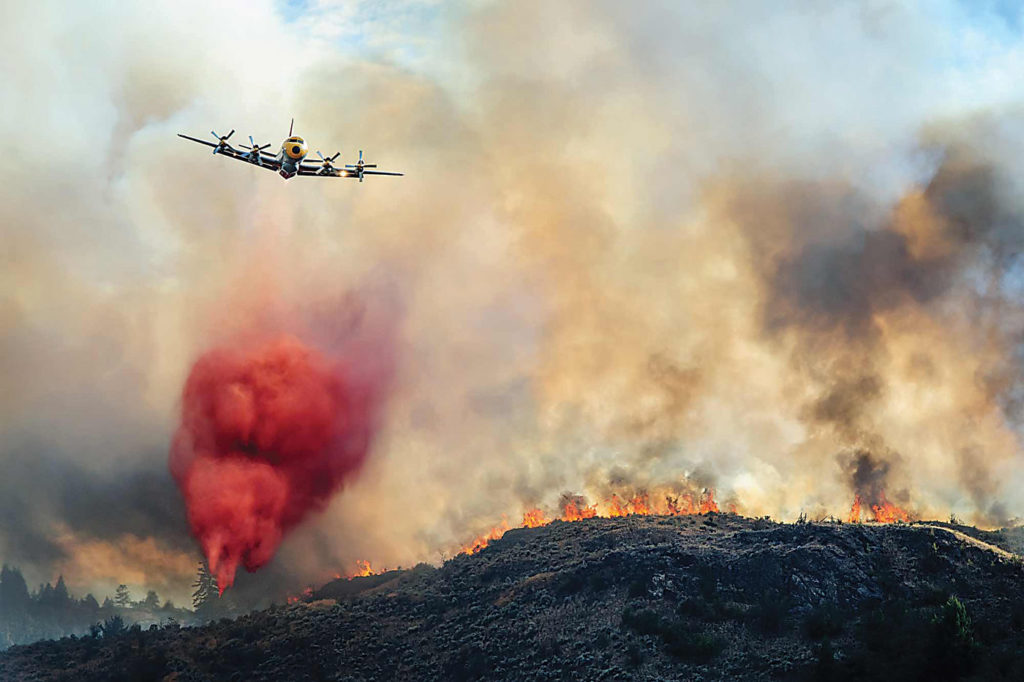
Air Spray strives for low turnover among its cadre of its more than 40 pilots.
“Some of our pilots are year-round employees with a specified role, e.g. chief pilot or check pilot,” explained Lane. “But most of our pilots in Canada are seasonal employees who come back to us every year, so we have a low turnover in terms of the number of pilots that we bring back in Canada every year.”
The operation tries to provide pilots with an advancing career path through its multiple aircraft platforms. “They might come in and sit right seat in an Electra to start and move from there to the bird dog, and then back to the left seat in the Electra, and then potentially move from there to the jet.”

One Electra pilot has moved over to the Fire Boss. “We want our pilots to get experience with multiple airframes,” continued Lane. “The last thing we want to have happen is to get a hot, heavy fire season and planes are grounded because we don’t have spare pilots to cover off.”
Air Spray’s pilot pool for the U.S. operation is presently around 10 to 15 plus additional spare pilots who move around. This number will significantly increase once the BAe 146 fleet is on contract.
“We have a six-and-one or a 12-and-two day schedule there, so we employ a corporate pilot to ferry pilots around,” said Lane.
Thirty aircraft maintenance engineers and support personnel round out the U.S. strength. Along with about 130 in Canada, the total staff is just shy of 200.
All contracts are with government agencies. “We contract with, say, Alberta or B.C. for 120 days, and they can extend it at either end,” explained Lane. “An example is Fort Mac, where we had all of our assets that could be called on that fire, but at the same time there were fires in B.C. and they couldn’t release them [those aircraft].”
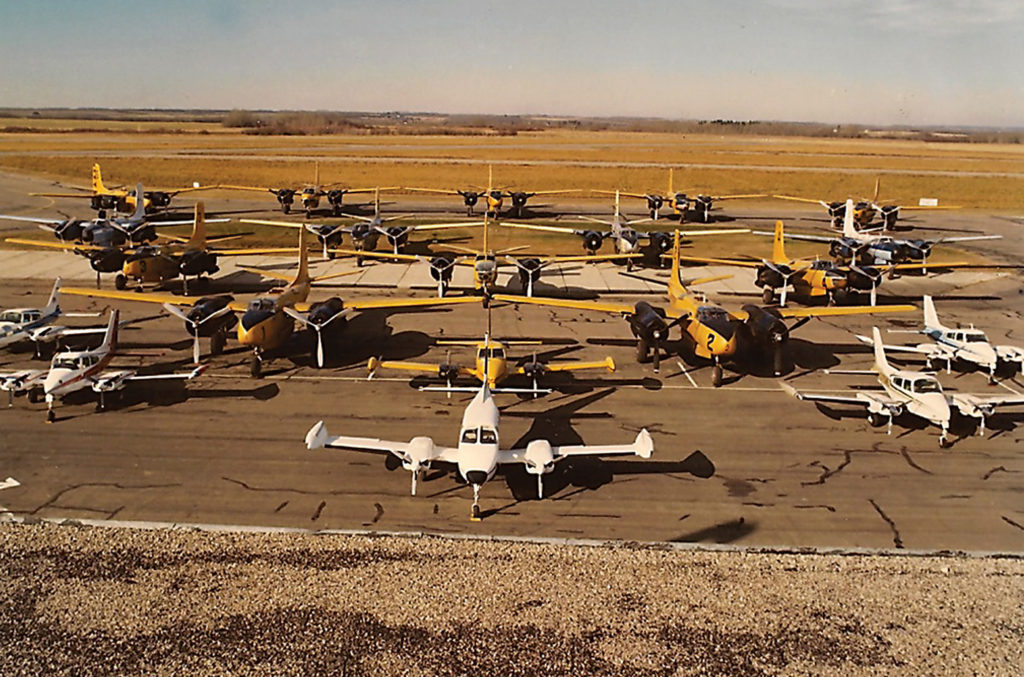
In that case, other provinces like Quebec or Ontario can respond under an inter-governmental agency called the Canadian Interagency Forest Fire Centre (CIFFC) that handles requests for cooperation.
Under the contracts, “any communication as to which fires are being fought or how we are handling the fires is all handled by our contractee,” confirmed Lynn Hamilton. “We just provide the aircraft, pilots and maintenance support personnel, and they manage where and how the fires are being fought.”
For support, each of the Canadian agencies establishes air tanker bases to provide retardant. “Say the fire risk is high in the Whitecourt area, then we’d deploy to that air tanker base,” said Lane.
In the U.S., Air Spray is more self-reliant. They deploy their own truck and trailer for loading an 802 or a Fire Boss with fuel and/or retardant.
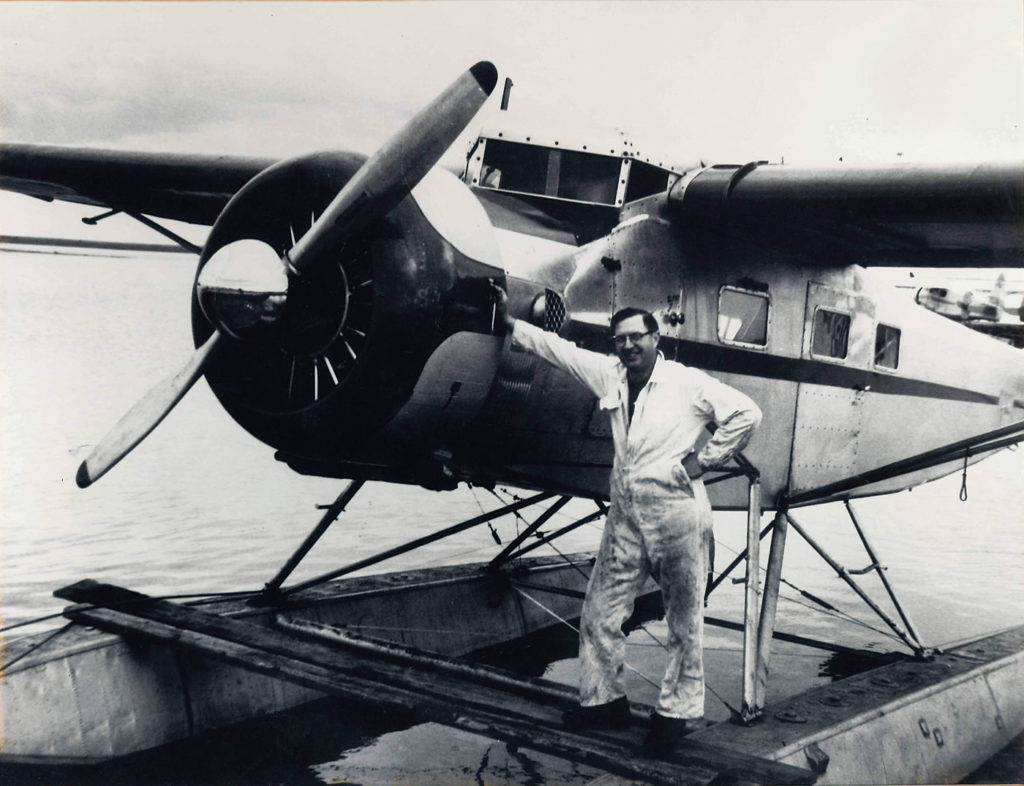
Sideline work includes some charters to keep the Commanders flying. “We also do third-party maintenance work, parts manufacture for ourselves and others, and have OEM capabilities,” said Lane. “And structural repair work for others; including large jobs like overstresses.”
Pre-season simulation
Air Spray designs, builds, and updates its own simulators; the first was for the Electra.
“We’ve also built a Turbo Commander simulator,” added Lane. “It flies alongside our Electra simulator and we can simulate bombing runs, lead-ins by the bird dog, etc. We can do all the communication strategies. If you are in the Commander you will see your Electra flying alongside and see the bombing drop. And in the Electra, you will see the Commander.”
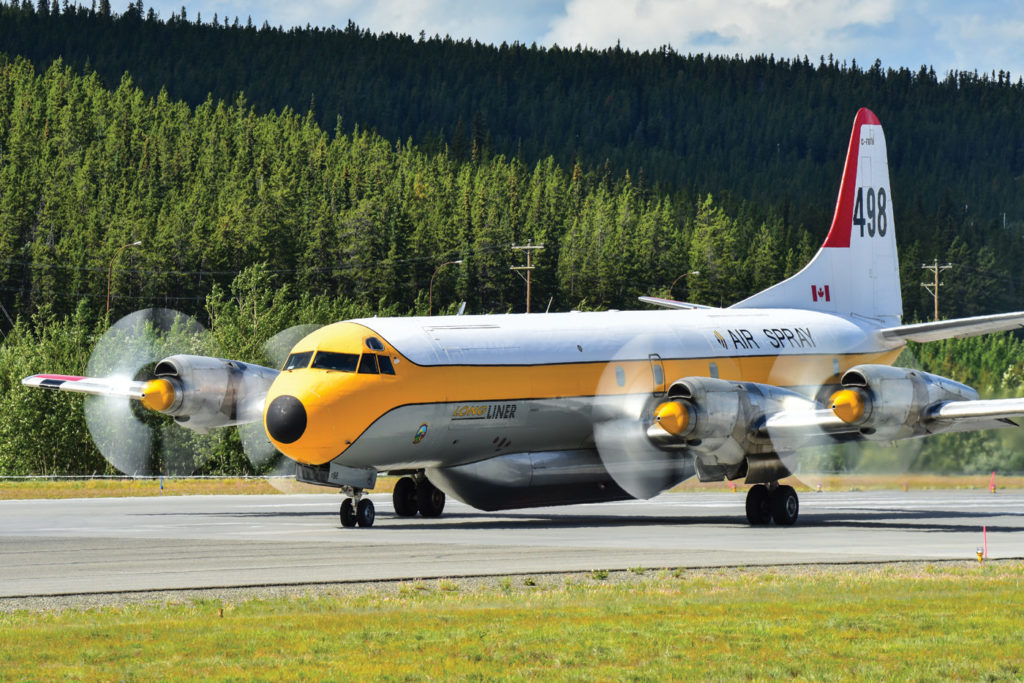
The company finds the simulators extremely beneficial, especially early in the fire season. “We are finding with the earlier starts to the fire seasons our pilots are going out very well prepared,” noted Hamilton. “Because those first fires in early April [2011 in Slave Lake] were very intense; [we had] very dry conditions with high winds. So this gives our pilots the opportunity to experience the bombing runs prior to getting onto the job, and we’re finding they are feeling a lot safer when they are out on those early fires.”
It’s more than just flying the aircraft; the simulations are comprehensive. Pilots see smoke on the horizon, head out to the fire, practice various approaches, see their drop, and can evaluate its accuracy. Hamilton said they have government employees in the bird dog simulator “so they learn how to communicate with the air tanker.”
Lane added that Air Spray is nearing completion of an 802 Fire Boss simulator which will feature hydraulic motion to facilitate skimming training.
Future direction
Lane said the BAe 146 conversion program in the U.S. will also provide a stepping stone to the next generation of tanker aircraft in Canada.
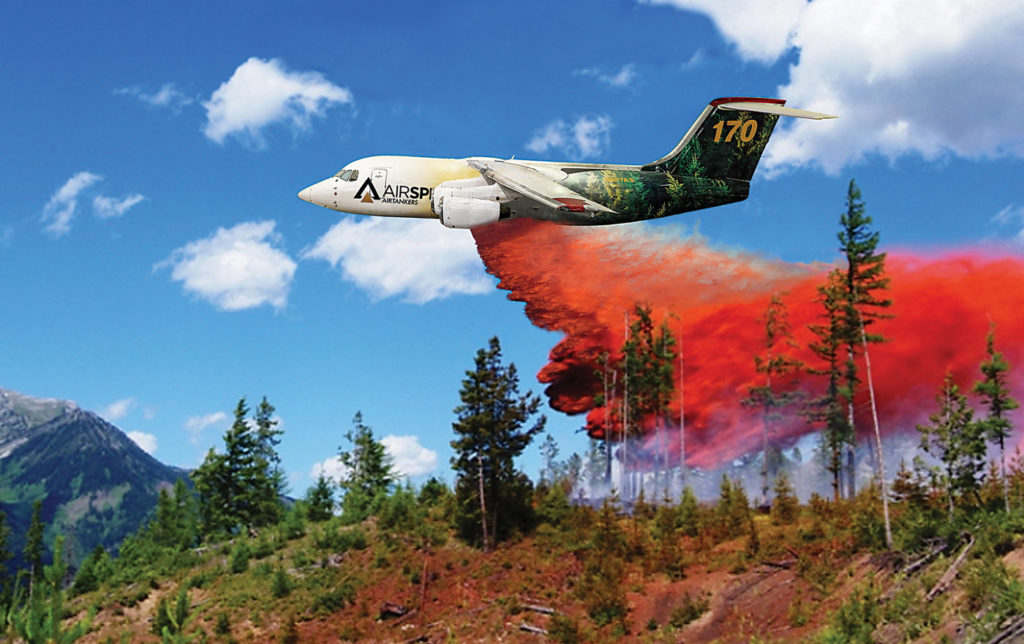
“The Electra still has lots of life left in it. But if we are not planning for the future, we are falling behind.”
He sees the U.S. market poised for some serious growth. In four years, Air Spray has gone from zero presence in the U.S. to contracting out to nine state agencies. “So we will have to add to that fleet to meet growing state and federal demand.”
Lane predicted strong growth in the 802F and Fire Boss programs. “And, clearly, the big one is the BAe 146.”
The Canadian market is a bit more mature, he noted. “We are looking at what the next air tanker will be after the 146, but we are also looking at countries in the southern hemisphere where we will start to see a replication of long term planning and contracting. We see that as one of the big growth areas we can transition into.”

And global warming is having more of an influence on the business. “I think we will see our contracts start to get longer and we’ll need additional spare aircraft,” predicted Lane.
“Our growth is organic in a sense. This is a highly specialized industry; it’s not something you can plan to build in a year. It is like growing a vineyard. You have to do it over a five- or 10-year basis. For us being mature in this industry, we are trying to ensure that we renew the business every day.”
With exciting growth opportunities on the horizon, it’s a sure bet that Lynn Hamilton and Paul Lane still talk about airplanes, pilots and contracts around the dinner table.
Graham Chandler is a Calgary-based freelance writer with specialties in aviation, business and heritage. His articles appear regularly in several national and international publications. Along with degrees in physics, business and archaeology, he is an engineering graduate of the U.S. Naval Test Pilot School.

